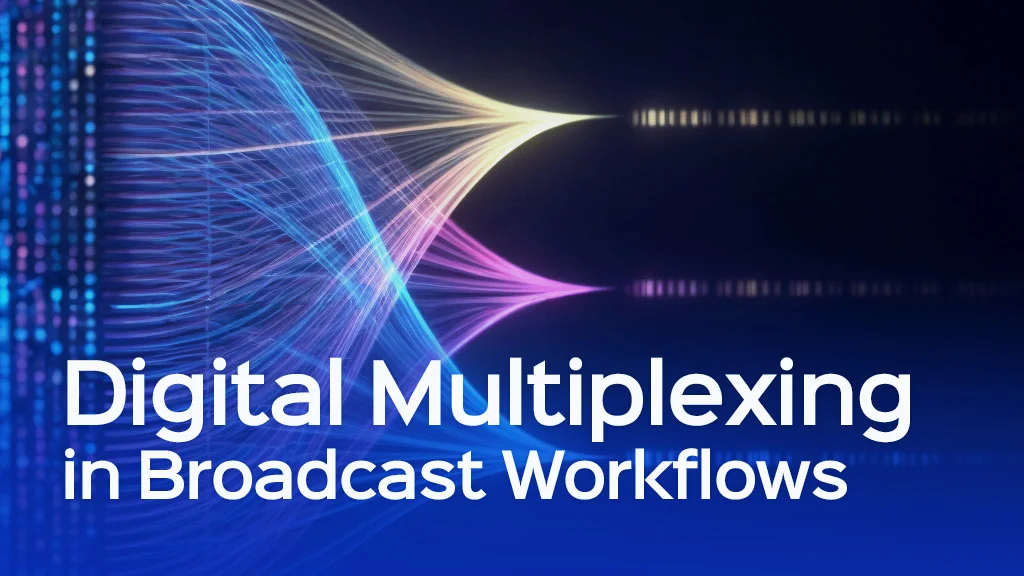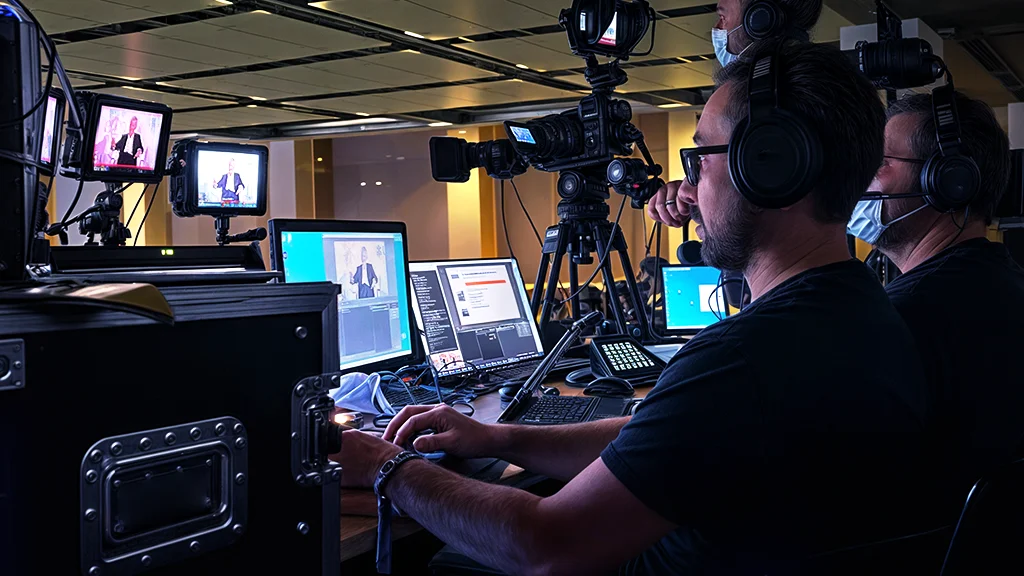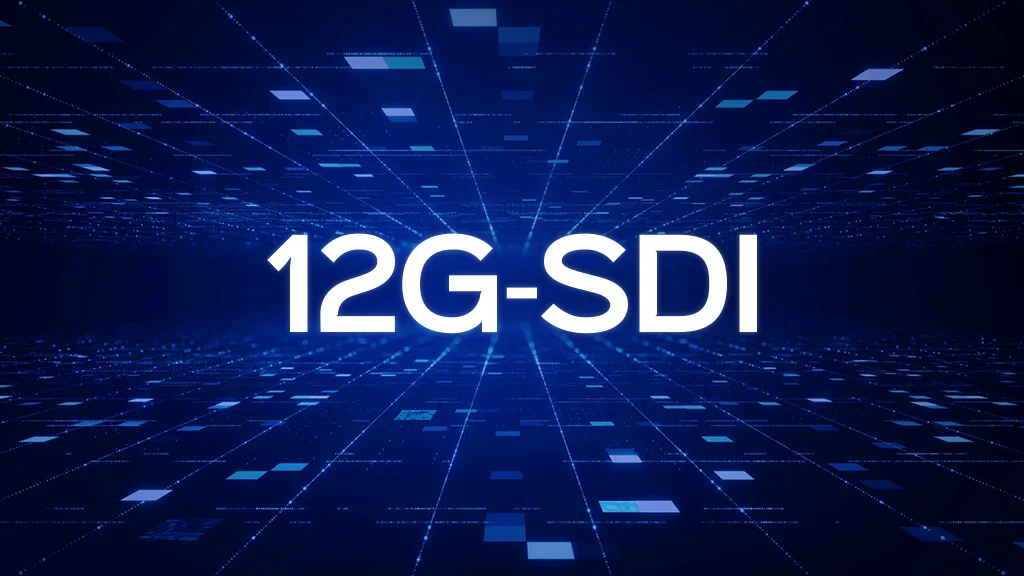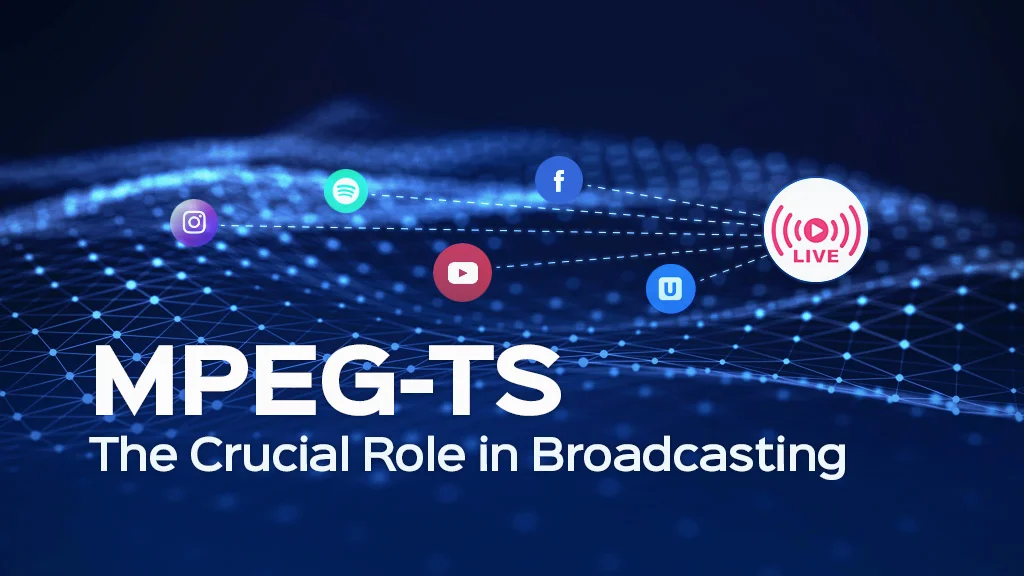
- Article
Digital Multiplexing in Broadcast Operations: Benefits and Techniques
Digital multiplexing is a fundamental technology in Radio and TV broadcast Operations that allows multiple digital signals to be transmitted concurrently over a single communication channel. This process is essential for optimizing bandwidth, reducing the costs and times of signal transmission, and also enhancing the efficiency of broadcasting systems.
For an instance, Multiplexing plays an important role in production control room , where it facilitates the efficient management and transmission of multiple audio and video signals. At the core, the approach involves encoding multiple source signals and combining them by using different techniques, such as Time Division Multiplexing (TDM), Frequency Division Multiplexing (FDM) and Code Division Multiplexing (CDM).
Key Techniques of digital multiplexing in broadcast industry
Several key techniques are employed in digital multiplexing, each designed to meet specific needs in broadcasting and telecommunications.
Time Division Multiplexing (TDM) is one of the most widely used techniques. It works by dividing the transmission time into distinct time slots, allowing multiple signals to share the same channel by transmitting in rapid succession. Each signal is assigned to a specific time slot during which it can send its data, making TDM particularly effective for applications with bursty traffic, such as digital telephony and live broadcasting, ensuring that multiple streams can be sent without interference.
Frequency Division Multiplexing (FDM) operates by dividing the available bandwidth of a communication channel into separate frequency bands; each dedicated to a different signal. This method allows for simultaneous transmission of multiple signals without interference, making it ideal for radio and television broadcasting. FDM maximizes the use of the frequency spectrum, enabling broadcasters to deliver a wide range of programming.
Code Division Multiplexing (CDM) employs unique spreading codes to distinguish between multiple signals transmitted simultaneously over the same frequency band. Each signal is encoded with a specific code, allowing the receiver to separate and decode the signals effectively. CDM is widely used in mobile communication systems and has applications in broadcasting, particularly for delivering multiple streams of content efficiently.

Importance of multiplexing in signal transmission
Efficient Use of Bandwidth
Multiplexing optimizes the available bandwidth by allowing multiple signals to share a single transmission medium. This leads to better utilization of the frequency spectrum, reducing waste and maximizing data throughput.
Increased Capacity
By enabling the simultaneous transmission of multiple signals, multiplexing significantly increases the capacity of communication channels. This is especially important as demand for data transmission continues to grow, accommodating more users and services without requiring additional infrastructure.
Cost Reduction
Utilizing a single channel for multiple signals minimizes the need for additional transmission lines or frequencies, lowering operational costs for service providers. This makes broadcasting and telecommunication approaches more economically viable.
Signal Quality Preservation
Digital multiplexing techniques, such as Time Division Multiplexing (TDM) and Frequency Division Multiplexing (FDM), maintains original signal quality by reducing interference and noise. Digital signals are less prone to degradation, resulting in audio and video transmission in their original conditions.
Flexibility and Scalability
Multiplexing allows for the easy addition or removal of channels within a transmission system. This flexibility is crucial for adapting to changing demands, enabling service providers to scale their offerings without significant infrastructure changes.
Support for Advanced Services
Multiplexing facilitates the delivery of advanced services, such as interactive content, multiple audio tracks, and real-time data streams. This enriches the user experience and supports a wide range of applications, from video on demand to teleconferencing.
Simplified Network Management
By consolidating multiple signals into a single stream, multiplexing simplifies the management of communication networks. It reduces the complexity of routing and switching, making network operations more efficient.
Enhanced Reliability
Multiplexing can provide redundancy and reliability in signal transmission. For instance, using techniques like Code Division Multiplexing (CDM), signals can be transmitted with built-in error correction, improving overall transmission integrity.
How Digital Multiplexing Works in Broadcasting
In the transport stream multiplexer , the multiplexing process begins with the encoding of audio and video signals into a digital format. Once encoded, these signals are combined into a single stream using various multiplexing techniques, such as TDM, FDM, or (CDM). This combined signal is then transmitted over a broadcasting medium, which may include terrestrial, satellite, or cable networks.
At the receiving end, the signal undergoes demultiplexing, which separates it back into its original components. The demultiplexer decodes the combined signal, extracting the individual audio and video streams for playback. Additionally, digital multiplexing supports advanced features in broadcasting, including interactive services, electronic program guides (EPGs), and multiple audio tracks.
Read also :
Applications of Multiplexing in Broadcast
Here are some key Applications of multiplexing in the broadcast industry:
Signal Management
In the broadcast cycle, a diverse array of audio and video sources—such as outputs from radio and television studios—requires simultaneous monitoring and management to ensure seamless transmission. The multiplexing process involves the integration of various inputs, which may include high-definition video feeds, audio channels, and metadata, into a unified format.
This not only simplifies the management of multiple inputs but also facilitates real-time adjustments and routing. Once the data reaches its destination, it undergoes demultiplexing (DEMUX), where the original streams are separated and directed to their respective outputs.
This ensures that each signal is delivered with the required fidelity and timing, maintaining the quality and synchronization essential for effective broadcasting.
Data Integration and Monitoring
Digital multiplexing supports the integration of monitoring systems that provide real-time data on signal levels, audio quality, and video feed integrity. This capability allows operators to make informed decisions quickly, ensuring that any issues are addressed before they affect the broadcast flow.
Applications of Multiplexing in Remote Contributions
With the rise of remote broadcasting, multiplexing enables broadcasters to gather signals from remote locations efficiently. By using the technique, broadcasters can ensure high-quality transmission of these remote signals.
Multilingual Broadcasting
The ability to deliver content in multiple languages is important. Digital multiplexing allows broadcasters to transmit several audio tracks simultaneously.
Data Services
The process also facilitates the transmission of metadata, such as program information, closed captions, and interactive features. By integrating these services with audio and video streams, broadcasters can provide viewers with additional context and enhance engagement.
Enhanced Communication
In broadcast, communication between team members is vital. Digital multiplexing can facilitate the integration of intercom systems, allowing team members to communicate effectively while managing multiple signals. This enhances collaboration and ensures that everyone is aligned during fast-paced production environments.
Future of Digital Multiplexing in Broadcasting
This is poised for significant evolution, driven by advancements in technology, changing consumer demands, and the increasing complexity of media consumption. Here are some key trends and potential developments to watch for in the coming years:
Higher Bandwidth Utilization: As demand for high-definition (HD), 4K, and even 8K content grows, future multiplexing techniques will likely focus on maximizing bandwidth efficiency. Advanced compression algorithms and more sophisticated multiplexing methods will allow broadcasters to deliver more channels and higher-quality content without requiring additional spectrum.
Moreover, for higher bandwidth and longer transmission distances increases in broadcast, integrating SDI signals into optical multiplexing systems becomes essential. Optical multiplexer (optical MUX) allows for the efficient transmission of multiple SDI signals over fiber-optic cables, which can cover much greater distances without signal degradation.
Secure Transmission: As digital broadcasting becomes more complex, ensuring the security of transmitted content will be critical. Future multiplexing technologies may incorporate advanced encryption methods to protect against piracy and unauthorized access.
Adoption of AI and Machine Learning: AI and machine learning technologies can optimize digital multiplexing processes. This may lead to more effective channel management.
Cloud-Based Broadcasting: The transition to cloud-based broadcasting solutions will enable more flexible and scalable multiplexing systems. Broadcasters can manage and distribute content from centralized cloud environments, facilitating the delivery of diverse services.
Personalized Content: Future multiplexing systems may allow for more personalized broadcasting experiences, where viewers can select from multiple audio tracks, camera angles, or even alternate story lines in real-time. This could be achieved through enhanced multiplexing protocols that support dynamic content delivery.









